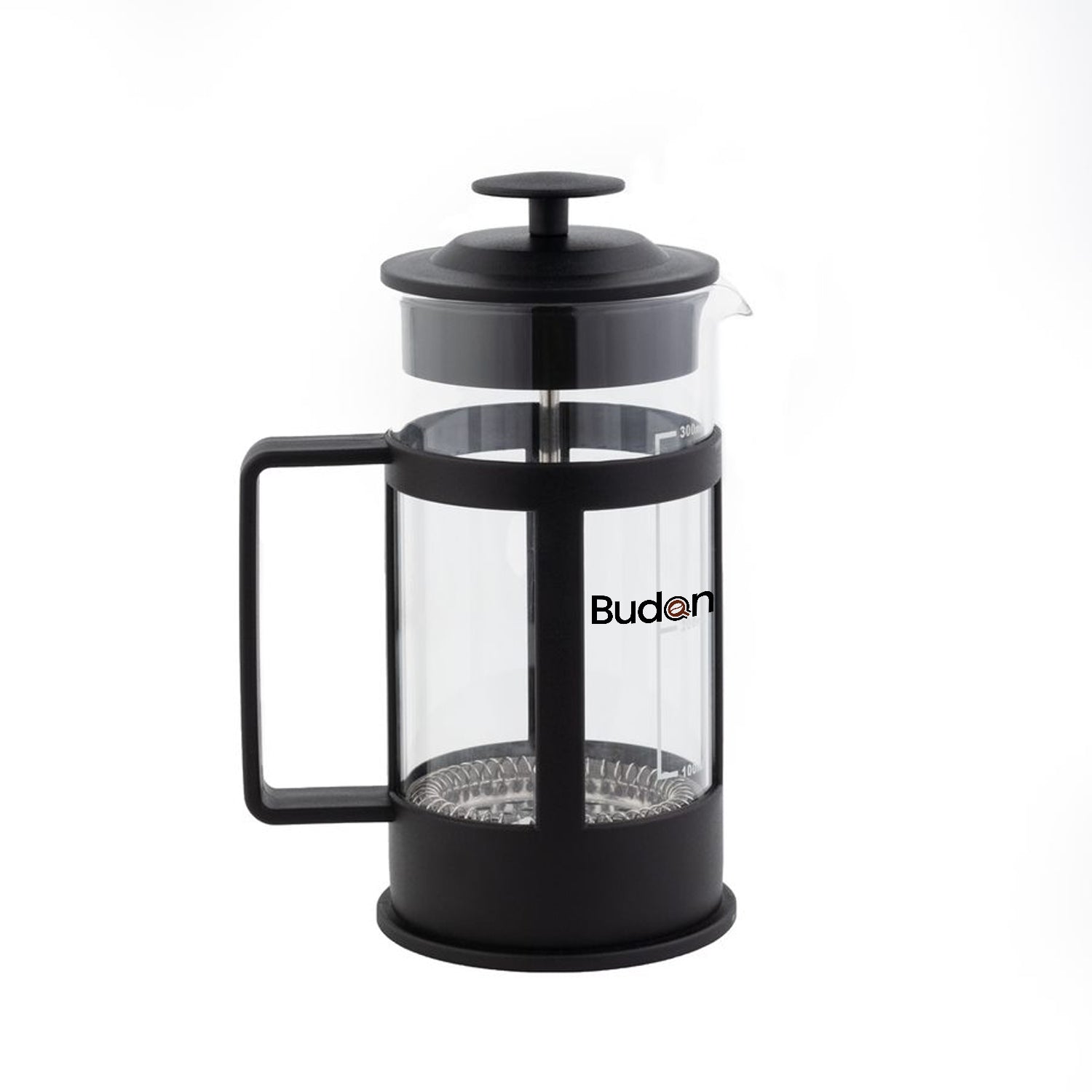When it comes to choosing coffee beans, most people are familiar with Arabica. But there's another variety that powers a large percentage of the world's caffeine consumption—Robusta coffee beans. Known for their bold flavor, higher caffeine content, and resilience in harsh growing conditions, Robusta beans play a significant role in the global coffee industry.
In this blog, we’ll explore everything you need to know about Robusta coffee beans, including their origin, growing conditions, flavor profile, uses, and how they compare to Arabica. Whether you're a coffee aficionado or someone curious about the beans behind your daily cup, this guide will give you a deeper understanding of the often-underestimated Robusta.
What Are Robusta Coffee Beans?
Robusta (Coffea canephora) is a species of coffee plant that produces beans known for their strong flavor, high caffeine, and hardy nature. These coffee beans are typically grown at lower elevations (200–800 meters above sea level) and can withstand higher temperatures, more pests, and varying rainfall patterns—making them easier and more economical to cultivate.
Robusta plants are primarily grown in Africa and Asia, with leading producers including Vietnam, India, Brazil, and Uganda. In fact, Vietnam is the world’s largest exporter of Robusta, accounting for over 40% of global supply.
Characteristics of Robusta Coffee Beans
Robusta beans differ significantly from their Arabica counterparts in several key ways:
-
Bean Shape: Smaller, rounder, and more compact than Arabica beans
-
Caffeine Content: Typically 2.2–2.7%, nearly double that of Arabica
-
Chlorogenic Acid: Higher levels contribute to bitterness and disease resistance
-
Sugar Content: Lower than Arabica, resulting in less sweetness
-
Yield: Higher yield per plant due to stronger resistance and lower maintenance
These characteristics make Robusta a practical choice for mass production, especially in climates where Arabica cannot thrive.
Flavor Profile of Robusta Coffee
If Arabica is celebrated for its subtle sweetness and fruity acidity, Robusta coffee beans are known for their:
-
Strong, bold taste
-
Earthy, woody, or nutty notes
-
Slight bitterness with a heavier body
-
Grain-like or chocolate undertones (in darker roasts)
While often labeled as "harsh" or "astringent" by some specialty coffee enthusiasts, high-quality Robusta beans can deliver a rich, satisfying experience—especially when brewed correctly or blended with Arabica.
In fact, many espresso blends use a mix of Arabica and Robusta to add body, bitterness, and crema to the shot.
Robusta vs. Arabica: What’s the Difference?
Here’s a side-by-side comparison to help you understand how Robusta stacks up against Arabica:
|
Feature |
Robusta Coffee Beans |
Arabica Coffee Beans |
|
Caffeine Content |
2.2–2.7% |
1.2–1.5% |
|
Flavor Profile |
Strong, bitter, earthy |
Smooth, sweet, acidic |
|
Sugar Content |
Lower |
Higher |
|
Growing Altitude |
200–800m |
600–2000m |
|
Disease Resistance |
High |
Moderate to low |
|
Price |
Lower |
Higher |
|
Uses |
Instant coffee, espresso blends |
Specialty coffee, filter brews |
Robusta may not offer the complex flavor profile of Arabica, but its higher caffeine and crema production make it a favorite in many commercial and espresso applications.
How Robusta Coffee Beans Are Used
Robusta is incredibly versatile in the coffee industry. Here’s how it’s commonly used:
1. Espresso Blends
Many Italian-style espresso roasts include 10–30% Robusta for a thicker crema, stronger body, and caffeine kick. It balances out the brightness of Arabica and enhances the mouthfeel.
2. Instant Coffee
Robusta’s lower cost and strong flavor make it the bean of choice for most instant coffee brands. It maintains its taste profile even after processing and packaging.
3. Traditional South Indian Filter Coffee
In India, Robusta is widely used in filter coffee blends, often combined with Arabica and chicory to produce a deep, bold brew with a creamy texture.
4. Cold Brew and Iced Coffee
Its boldness holds up well against milk and ice, making it ideal for cold brews and ready-to-drink bottled coffee.
Benefits of Robusta Coffee Beans
While Robusta is sometimes viewed as inferior to Arabica, it offers a number of benefits:
1. Higher Caffeine = Stronger Kick
For those who want their coffee to wake them up, Robusta’s high caffeine content provides a quick energy boost.
2. Resilience = Sustainability
Robusta plants are more pest-resistant and drought-tolerant, requiring less pesticide use and fewer resources. This makes Robusta a more sustainable crop in certain regions.
3. Affordability
Robusta is more cost-effective to grow and purchase, making it accessible for consumers and producers alike.
4. Rich Crema in Espresso
Thanks to its natural oils and high caffeine, Robusta beans contribute to a thick, golden crema—a hallmark of quality espresso shots.
Brewing Robusta Coffee: Tips for a Better Cup
To get the best out of Robusta coffee beans, consider the following brewing tips:
1. Opt for a Darker Roast
Roasting Robusta beans to a medium-dark or dark profile helps mellow bitterness and brings out chocolate and nutty notes.
2. Espresso or Moka Pot Is Ideal
Brewing with pressure-based methods like espresso machines or Moka pots can extract Robusta’s intensity in a smoother, more flavorful way.
3. Use in Blends
If straight Robusta is too bold for your taste, try blending it with Arabica for a balanced, full-bodied experience.
4. Use Fresh, High-Quality Beans
Look for specialty-grade Robusta from regions like India, Uganda, or Vietnam. These beans are hand-picked and processed with care, offering better cup quality.
Where to Find Robusta Coffee Beans
While Arabica dominates the specialty coffee scene, Robusta is gaining recognition. You can find high-quality Robusta beans in:
-
South Indian brands like Narasu’s, Leo, and Kumbakonam coffee
-
Indian specialty roasters like Black Baza, Third Wave, and Something’s Brewing
-
Online retailers offering curated blends for espresso or South Indian filter coffee
Look for 100% Robusta or Arabica-Robusta blends labeled with origin, processing method, and roast level.
Final Thoughts: Why Robusta Deserves a Second Look
Often overlooked in favor of Arabica, Robusta coffee beans offer bold flavor, affordability, sustainability, and unmatched caffeine strength. While it may not be the first choice for a pour-over, Robusta holds its ground in espresso, traditional filter coffee, and instant formats.
As the coffee world continues to embrace variety and explore new flavor territories, high-quality Robusta is getting the recognition it deserves—from bean to brew.
Whether you’re a die-hard espresso drinker, a South Indian filter coffee lover, or simply curious about exploring different types of coffee beans, don’t count Robusta out. Its unique qualities might just surprise you.


























